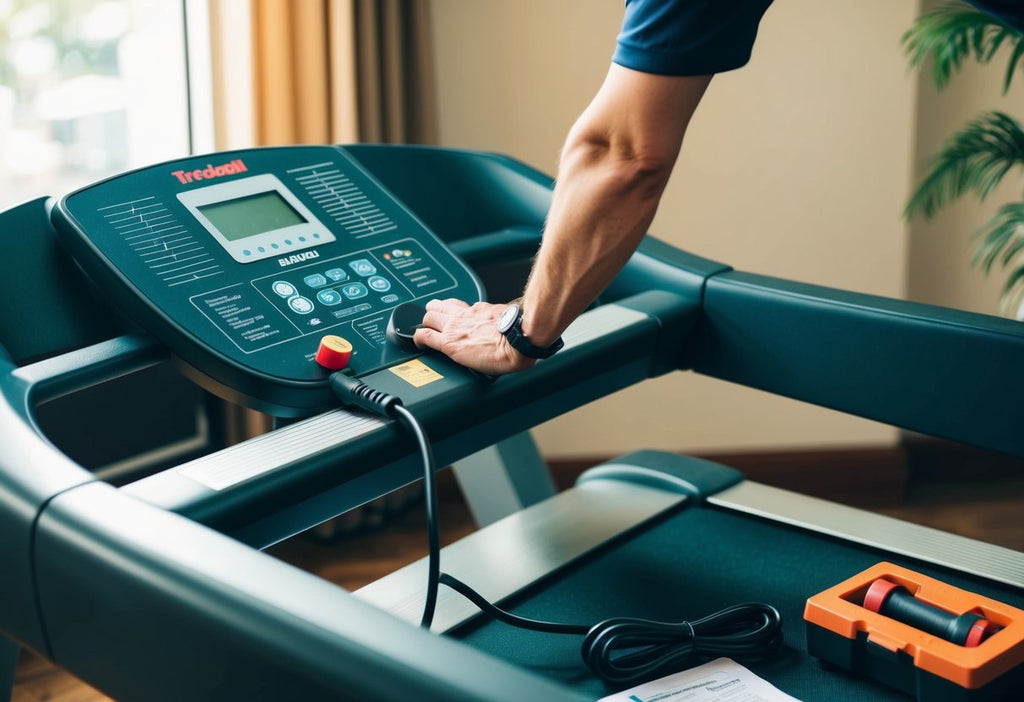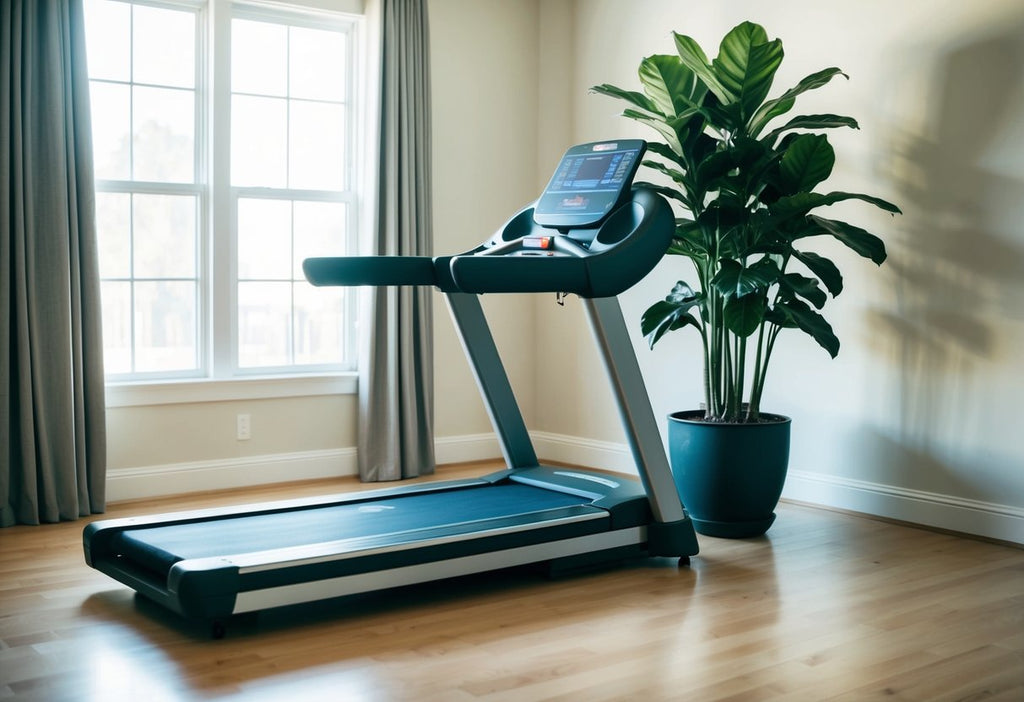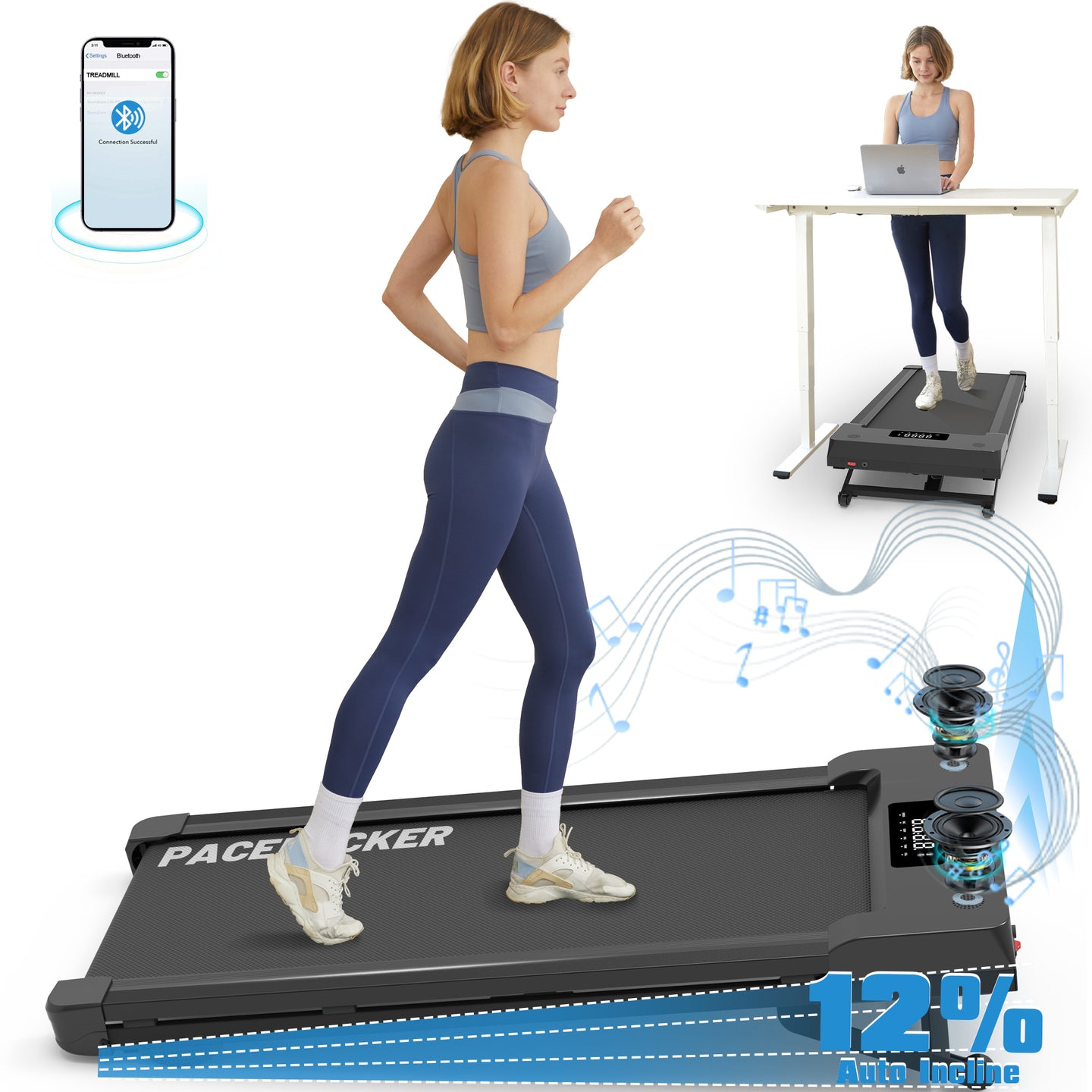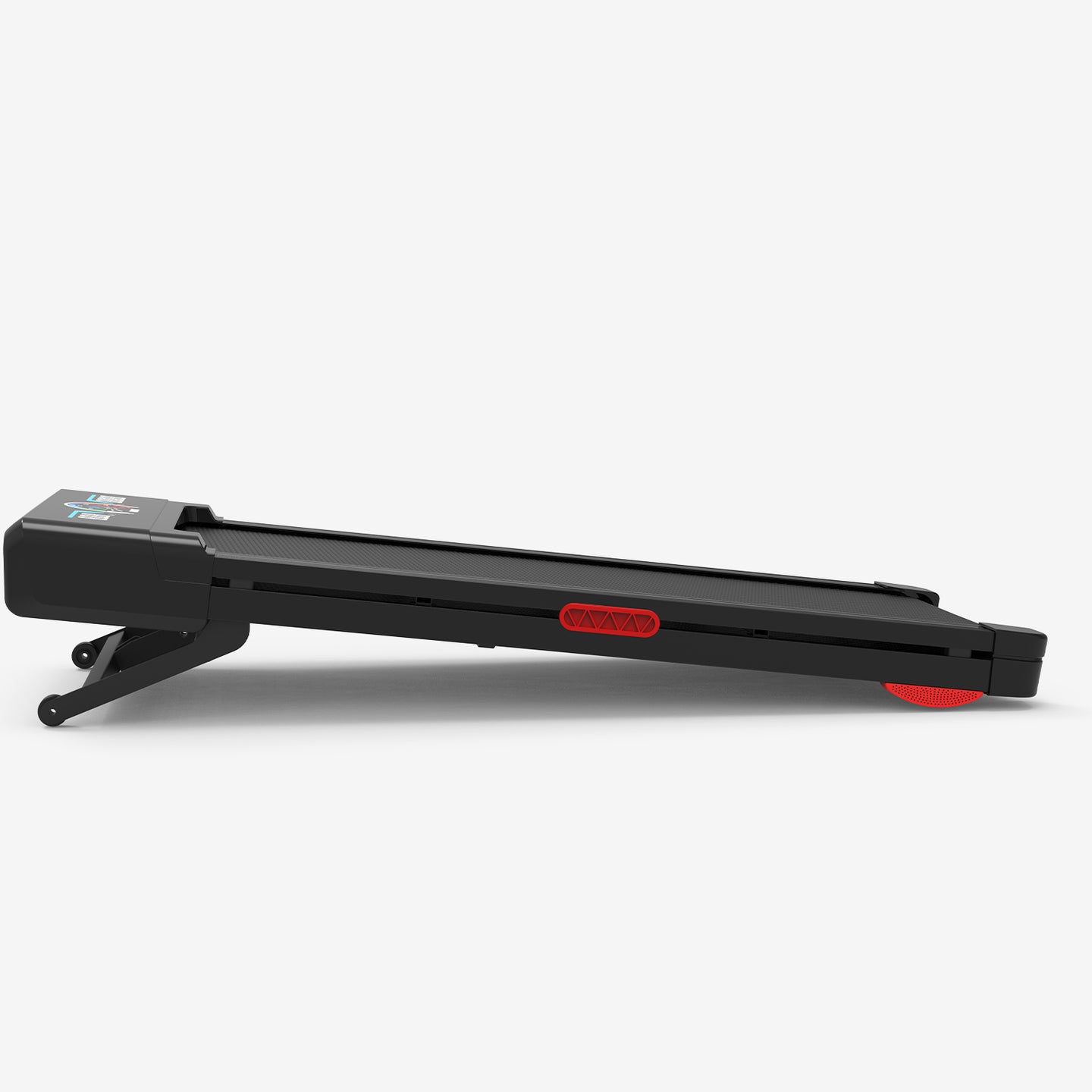How to Sprint on Treadmill
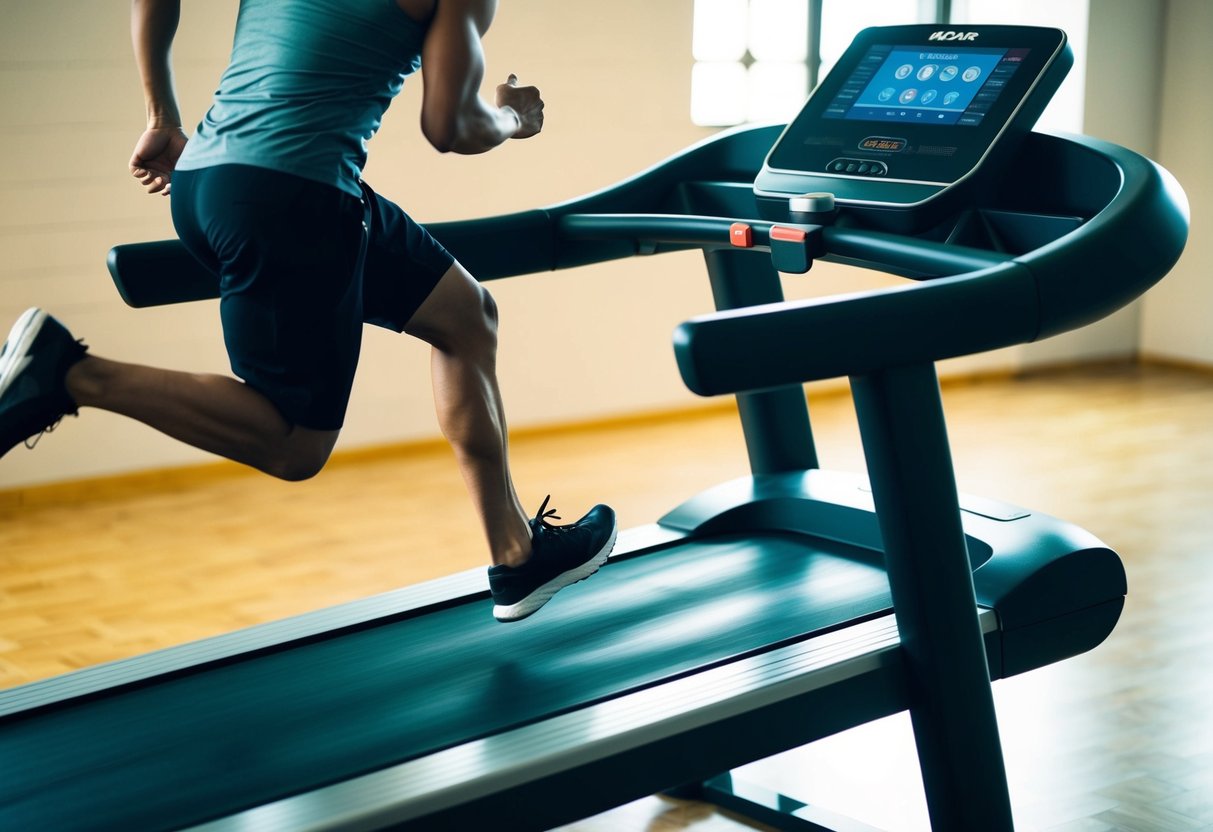
How to Sprint on Treadmill
Don’t forget to check out our Pacerocker, Trailviber, and Trailviber Auto Incline walking pad treadmills.
Getting the most out of treadmill workouts can transform our fitness journey, and sprinting is an essential skill to master. Sprinting on a treadmill requires mastering proper form, maintaining a steady pace, and using the right techniques to maximize benefits while minimizing risks.
It's about harnessing the treadmill's features to safely push our limits and achieve our fitness objectives.
The appeal of treadmill sprinting lies in its convenience and adaptability. We can easily adjust the speed and incline to tailor our workouts to match personal fitness levels and goals.
By incorporating essential warm-up exercises and following structured training sessions, we set ourselves up for success and improve our performance over time.
Staying safe is a top concern, especially when increasing speed. Adhering to safety precautions helps prevent injuries and ensure consistent progress.
Monitoring our progress by setting achievable goals and tracking metrics allows us to stay motivated and refine our techniques.
Key Takeaways
-
Effective form enhances sprinting benefits on a treadmill.
-
Safe practice includes warm-ups and using treadmill features wisely.
-
Tracking progress keeps us motivated and improves performance.
Basics of Treadmill Running
Treadmill running offers unique benefits, whether for convenience or weather conditions. Understanding settings and adjusting to the belt are vital for an effective workout.
Understanding Treadmill Settings
Navigating the treadmill’s console can initially seem daunting. We start with the primary settings: speed, incline, and program modes.
Speed allows us to control our pace, crucial for various training intensities. Selecting the right incline mimics outdoor conditions and adds challenges.
Program modes are designed for specific goals. For instance, interval training modes adjust pace and incline automatically.
Familiarizing ourselves with heart rate monitors and emergency stops also ensures a safe workout. Testing each setting gradually helps in adapting to how these changes impact our body during exercise.
Adjusting to the Treadmill Belt
The treadmill belt is different from running outdoors. Initially, the moving surface may feel unstable, so starting at a walk helps us find balance.
Positioning ourselves correctly is crucial; standing too far forward or back can lead to errors or discomfort.
Foot placement is another focus. Landing close to the center ensures smooth transitions and prevents mishaps.
Additionally, maintaining good posture and allowing our arms to move naturally aids in maintaining balance. Regular practice builds confidence, making our treadmill sessions both safe and effective.
Warm-Up Exercises
Warming up is crucial before sprinting on a treadmill to prevent injuries and enhance performance. We focus on both dynamic stretching and gradually increasing speed to prepare our bodies effectively.
Dynamic Stretching Routines
Dynamic stretching is vital to get our muscles ready for the intense activity of sprinting. It involves active movements that enhance flexibility and circulate blood to our muscles.
Leg swings are excellent for loosening up the hips. We should perform 10-15 swings forward and sideways for each leg.
Similarly, walking lunges stretch our hip flexors and quadriceps. We suggest performing 10 lunges on each leg.
Continuing with arm circles, we should rotate our arms in small to large circles, moving both forward and backward to activate the shoulder muscles. Each movement should be controlled and repeated 10-15 times.
Integrating these routines optimizes our readiness for the treadmill.
Starting at a Slow Pace
To transition smoothly into sprinting, we begin at a slow pace, allowing our bodies to adapt gradually.
A 5-minute walk or light jog at 3-4 mph helps us ease into the session. During this time, we focus on maintaining an upright posture and a steady rhythm as we breathe deeply and evenly.
By doing so, we increase our heart rate and gently warm our muscles.
As we progress, increasing the speed by 0.5 mph every minute prepares us for more intense sprints. This method lessens the risk of injury and promotes a more effective workout.
Sprint Technique on a Treadmill
When sprinting on a treadmill, it's essential to focus on maintaining a strong posture and mastering the mechanics of arm movement. These elements help optimize speed and efficiency while reducing the risk of injury.
Proper Posture and Foot Strike
We need to keep our posture upright but relaxed. Our core should be engaged and shoulders relaxed, allowing the spine to stay aligned. Looking straight ahead and avoiding tilting the head helps in maintaining balance and focus while running.
Foot strike is another crucial element. Landing on the midfoot and pushing off the balls of our feet propels us forward efficiently. This method distributes impact evenly, protecting the knees and ankles.
Short, quick strides keep momentum and reduce stress on joints. Checking foot placement periodically can fine-tune our technique.
Arm Swing Mechanics
Our arm movements play a significant role in sprinting effectively. The elbows should be bent at 90 degrees, swinging back and forth in coordination with our strides.
This natural movement helps to maintain balance and adds power to each step.
Focus on keeping our hands relaxed, lightly clenched without tension. Arm swings should come from the shoulders, moving in a straight line rather than crossing the body. This minimizes rotational movement, conserving energy for forward motion.
These techniques, when practiced regularly, enhance performance and build confidence in treadmill sprints.
Sprint Workouts
In our sprint workouts, we focus on boosting speed and endurance through varied exercises that challenge and improve our performance. Interval Training enhances stamina with alternating intense bursts and recovery periods. Hill Sprints build strength and power by simulating uphill running, while Speed Drills refine technique and increase agility.
Interval Training
Interval training involves alternating between high-intensity sprints and lower-intensity recovery periods.
We start with a warm-up, typically a 5-minute jog. Then, we sprint at our maximum capacity for about 30 seconds to 1 minute. Following this, a slow jog or walk for 1-2 minutes allows us to recover.
By repeating these intervals 5-10 times, we can greatly improve our cardiovascular fitness and speed. This workout boosts our endurance as we gradually increase the intensity and duration of the sprints and shorten the recovery periods over time. Monitoring heart rate can ensure intensity is sufficient for improvement.
Hill Sprints
Hill sprints on a treadmill mimic running uphill, increasing resistance.
We begin with a gentle incline and moderate speed for a warm-up of 5-10 minutes. After warming up, we set the treadmill to a steeper incline, around 4-6%, and sprint for 20-30 seconds.
The steep incline requires us to drive our knees higher and use more force to propel ourselves forward, building lower body strength and power. A lower incline and walking or jogging for 1 minute allows recovery. Repeating this sequence 6-10 times helps us enhance muscle strength.
Speed Drills
Speed drills are crucial for improving our sprinting technique. These drills emphasize quick foot movement and proper form.
One effective drill is the high knees exercise, executed by lifting our knees to hip level while maintaining a fast pace. We perform this for about 30 seconds.
Another beneficial drill is butt kicks, which involve flicking our heels towards the glutes rapidly.
Performing these for short intervals, with rests in between, can drastically improve our agility.
Safety Precautions
Staying safe on the treadmill is crucial for us to optimize our workouts and prevent injuries. Let's focus on understanding the built-in safety features and avoiding common mistakes that may lead to harm.
Using Safety Features
When we hop on a treadmill, engaging the safety features is essential.
The emergency stop clip, often overlooked, should be attached to our clothing. In any slip or trip incident, it halts the machine immediately.
Adjusting the speed incrementally helps in maintaining balance, especially crucial for beginners or after a sprint. It's a smart habit to start at a low speed, allowing us to gradually increase pace.
Remember, some treadmills offer user-specific settings—let’s utilize these to enhance our safety as they often allow us to set speed limits or preset workout options.
Keeping plenty of space around the treadmill is vital. Furniture or walls should not be close by, as these can be hazardous if we accidentally lose balance and fall.
Always ensure the machine is on a flat, firm surface to prevent any wobbling, which improves our overall stability during runs. Implementing these measures can significantly reduce risks and ensure that our sprinting sessions are safe and productive.
Avoiding Common Mistakes
One frequent mistake many of us make is skipping the warm-up phase. Jumping straight into high-intensity running can cause strains; starting with a brisk walk or light jog prepares our muscles.
Maintaining proper posture, with shoulders back and eyes forward, also cannot be overstressed. Poor posture might lead to discomfort and reduce our efficiency on the treadmill.
We must stay mindful not to overstride or land heavily, as these habits can lead to injuries. Instead, a quick, short step pattern works best.
Staying hydrated is another critical component. Many underestimate how much we can sweat during a treadmill workout—keeping a water bottle handy prevents dehydration.
Regularly checking for any wear and tear on the treadmill, especially the belt and handles, is important as well. Addressing these issues promptly keeps our equipment running smoothly and us safe.
Progress Tracking and Goals
To succeed in sprinting on a treadmill, it's crucial to set achievable goals and track our progress. By outlining our objectives and using technology, we can optimize our workout routine and celebrate milestones.
Setting Realistic Objectives
Setting the right objectives ensures we remain motivated and challenged. We should define both short-term and long-term goals to keep us engaged and on track.
For instance, increasing our sprint speed by 0.5 mph over a month or running a specific distance faster than before are practical targets.
Goals should be SMART (Specific, Measurable, Achievable, Relevant, Time-bound). These criteria help us stay focused and provide a clear roadmap for improvement.
A good practice is to periodically review and adjust our goals to reflect changes in ability or motivation.
Monitoring Progress with Treadmill Apps
Many treadmills come equipped with built-in apps that help us monitor our progress. These apps track key metrics like speed, time, distance, and calories burned, providing us with detailed insights into our performance.
By utilizing these apps, we can create a visual record of our achievements and identify areas for improvement.
Sharing our progress with friends or fitness communities is another way to maintain motivation and accountability.
Some apps also offer personalized training plans, adjusting our workouts based on past performance to ensure we continue to challenge ourselves effectively.
Engaging with technology in this way makes it easier for us to stay informed and motivated on our sprinting journey.
Frequently Asked Questions
Discover the essential tips for treadmill sprinting, including safety tips, effective workouts, and how to improve speed. We'll address the differences between treadmill and outdoor sprinting, various benefits, and if an incline is essential.
What's the safest way to start sprinting on a treadmill for new runners?
It's crucial to begin slowly and steadily increase speed. We should warm up first with a brisk walk or light jog. Gradually transition into sprints, focusing on form and maintaining balance.
Can you share effective treadmill sprint workouts to maximize fat loss?
High-Intensity Interval Training (HIIT) is a great method. We can alternate short sprints with recovery periods. For instance, sprint for 30 seconds and walk for 1 minute, repeating for 20 to 30 minutes.
How can I adjust my sprint workout to improve my speed on the treadmill?
Increasing sprint intervals and reducing recovery times may be helpful. We can also gradually increase the treadmill speed. Monitoring our heart rate ensures workouts remain intense enough for improvement.
What are the main differences between sprinting on a treadmill and outside?
Treadmills offer a controlled environment and reduce wind resistance, making pacing easier. However, we miss out on navigating varied terrain, which helps with agility. Weather conditions don't affect treadmill workouts, ensuring consistency.
What benefits does treadmill sprinting offer over traditional running methods?
Treadmill sprinting provides precise control over speed and incline. This allows us to tailor workouts specifically for fat loss or speed improvement. Reduced impact on joints compared to hard surfaces may also be a significant advantage.
Is an incline necessary for effective sprints on a treadmill?
Inclines can mimic outdoor conditions, increase intensity, and engage different muscle groups. However, we don't need to use an incline for effective workouts. An incline adds variety and may boost cardiovascular benefits.
Master treadmill sprinting with the right form, warm-ups, and workouts. Boost speed, endurance, and fat loss while staying safe and tracking progress effectively!


